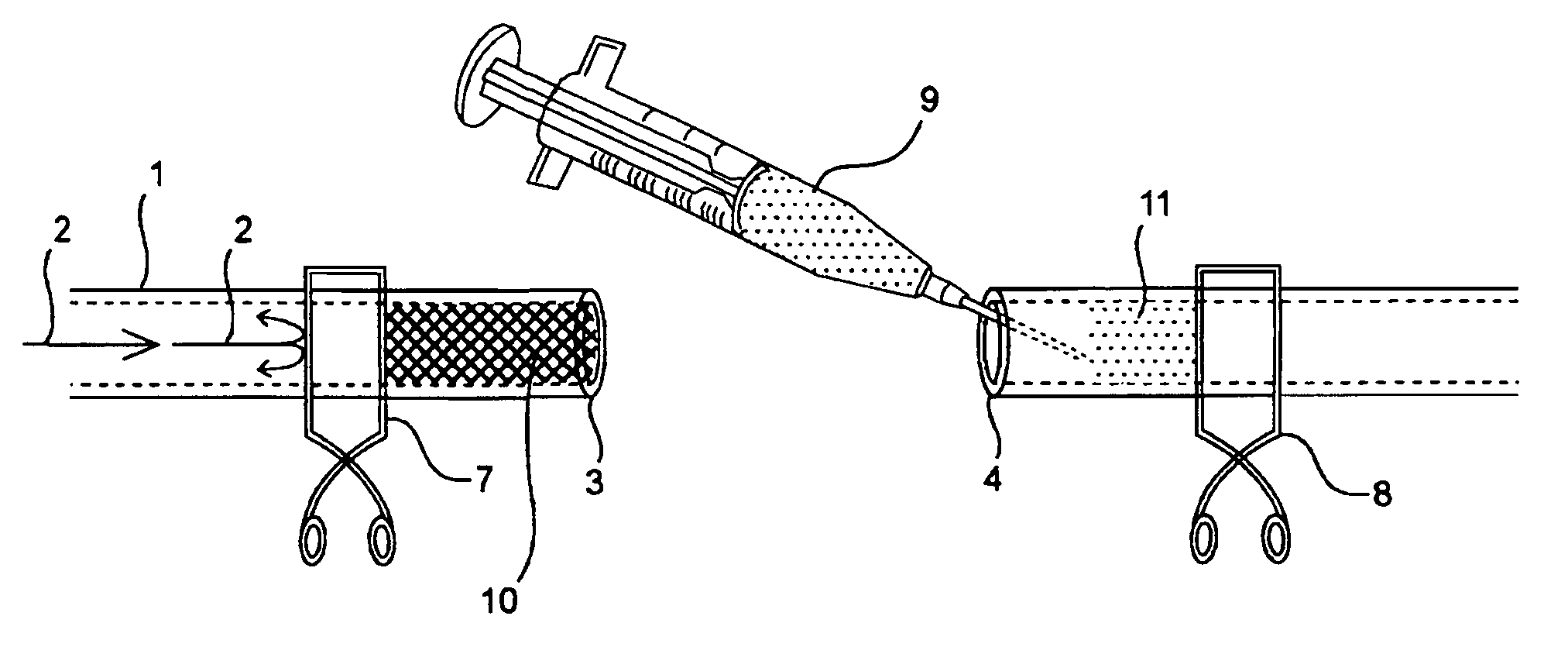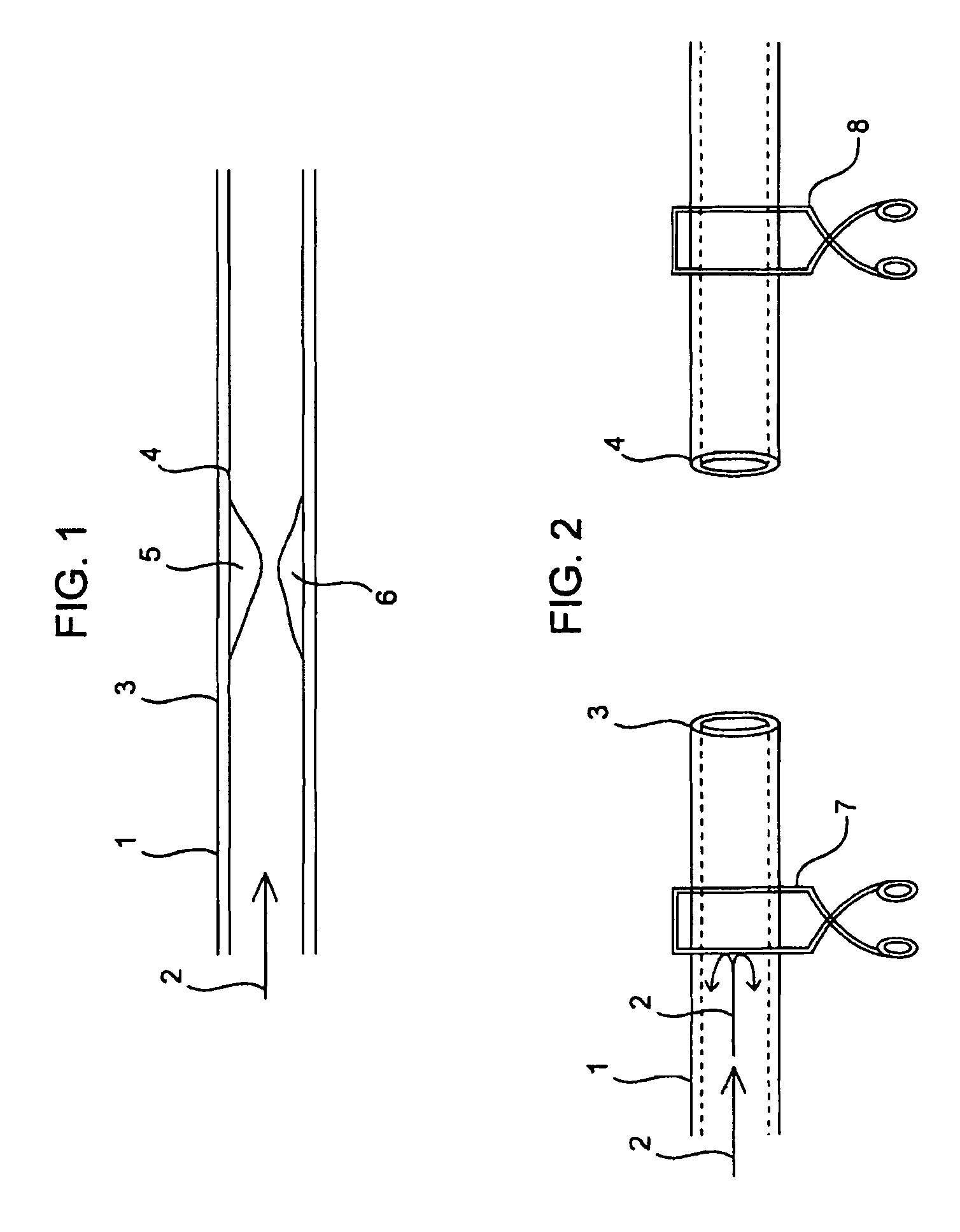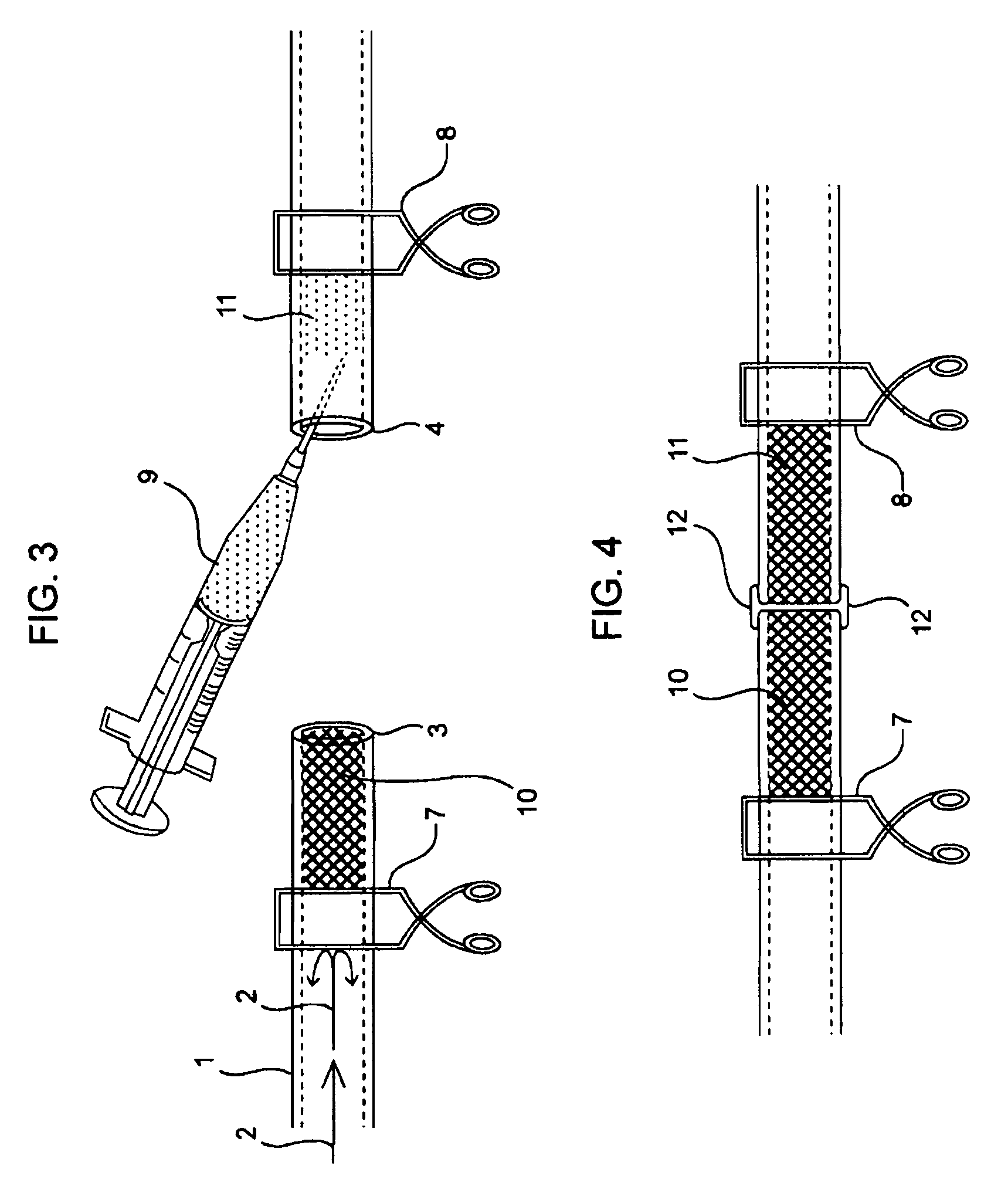Compositions and methods for joining non-conjoined lumens
a technology of non-conjoined lumens and compositions, applied in the field of compositions, methods, kits for joining together non-conjoined lumens, can solve the problems of long-term stenosis or fibrosis, calcified and diseased vessels providing mechanical challenges, and not well accepted automatic techniques
- Summary
- Abstract
- Description
- Claims
- Application Information
AI Technical Summary
Benefits of technology
Problems solved by technology
Method used
Image
Examples
example 1
Changing the Sol-Gel Transition Temperature of a Thermoreversible Sol-Gel Composition with the Addition of a Protein
[0353]One embodiment of the present invention relates to exploitation of the sol-gel transition temperature of thermoreversible sol-gel compositions, and this working example demonstrates how the gelation temperature may be altered to be slightly above the normal body temperature. Therefore, this example allows a sol-gel material to assume a gel state inside the distal portion of the lumen when the temperature is temporally raised to above the transition temperature so that the geometry of the distal portion of the lumen is stabilized during the anastomosis procedure. After the anastomosis procedure, the temperature is returned to normal body temperature, which is below the transition temperature of the sol-gel material, so that the sol-gel material liquefies and becomes flowable in the conjoined lumen. This working example demonstrates that with an appropriate concent...
example 2
Efficacy and Safety in an Animal Model Using Thermoreversible Anastomosis Compositions
[0372]This working example demonstrates that the present anastomosis compositions are efficacious in joining tubular tissues to result in bodily fluid flow through the resultant continuous lumen.
Anastomosis Using Thermoreversible Gel
[0373]Anastomosis was performed in normal rats. The Poloxamer solution in this example refers to the thermoreversible composition containing 17% poloxamer 407 and 1% BSA, as prepared in Example 1, above. All animals are treated and cared for in accordance with all applicable laws and regulations, and in accordance with good laboratory practices.
End to End Anastomosis Surgical Method Performed on Cardiac Tubular Tissues in Rats:
[0374]Rats were anesthetized with isoflurane and prepped in sterile fashion with 70% ethanol. The aorta was exposed and isolated with blunt and sharp dissection through a midline laparotomy incision. The aorta was clamped proximally and distally, ...
example 3
Use of Reversible Gel-Sol Anastomosis Compositions for Sustained Delivery of a Biologically Functional Molecule
[0385]The present materials were used for delivery of heparin, as determined by an enzyme linked immunoadsorbent assay. The present thermoreversible sol-gel composition containing heparin was compared to media alone. Human umbilical vein endothelial cells were incubation for 5 minutes in trans-well plates. Heparin in varied concentrations (10, 100 and 1000 U / mL) were added to the cells directly or with poloximer. Tissue Factor Pathway Inhibitor (TFPI), tissue factor (TF), thrombomodulin (TM) were measured at 2 hr, 6 hr and 24 hr post heprin addition using a ELISA kit (R&D Systems, MN USA). As shown in FIG. 8, poloxamer-mediated delivery of heparin is more effective than direct administration of heparin. Further, the effects of heparin persist up to 24 hours with poloxamer mediated delivery, longer than with direct administration. This demonstrates that as the composition tr...
PUM
| Property | Measurement | Unit |
|---|---|---|
| elastic modulus | aaaaa | aaaaa |
| elastic modulus | aaaaa | aaaaa |
| transition temperature | aaaaa | aaaaa |
Abstract
Description
Claims
Application Information
 Login to View More
Login to View More - R&D
- Intellectual Property
- Life Sciences
- Materials
- Tech Scout
- Unparalleled Data Quality
- Higher Quality Content
- 60% Fewer Hallucinations
Browse by: Latest US Patents, China's latest patents, Technical Efficacy Thesaurus, Application Domain, Technology Topic, Popular Technical Reports.
© 2025 PatSnap. All rights reserved.Legal|Privacy policy|Modern Slavery Act Transparency Statement|Sitemap|About US| Contact US: help@patsnap.com



